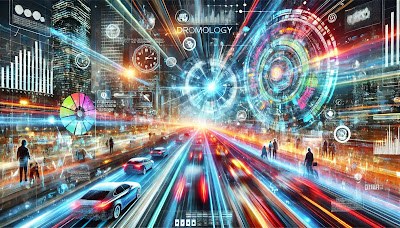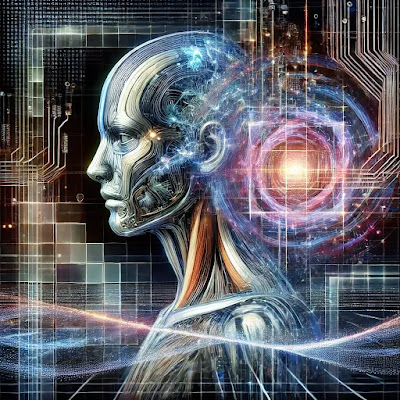Worksheet for Postgraduate Students on Cultural Studies
Click Here to view Task
- Slow Movement
- Dromology
- Risk Society
- Postfeminism
- Hyperreal
- Hypermodernism
- Cyberfeminism
- Posthumanism
1. Slow Movement:
- Definition: A cultural movement that advocates for a slower pace of life, emphasizing quality over quantity and mindful consumption.
- Key Characteristics:
- Emphasis on quality over speed
- Rejection of consumerism and materialism
- Focus on local and sustainable practices
- Prioritization of personal well-being and connection with nature
- Example: The Slow Food movement promotes savoring food, supporting local producers, and preserving traditional cooking methods.
- Relevance to Contemporary Society: In our fast-paced world, the Slow Movement offers a countercultural perspective, encouraging individuals to prioritize mindfulness, reduce stress, and foster a more sustainable lifestyle.
2. Dromology:
- Definition: A theory that explores the relationship between speed, technology, and social change.
- Key Characteristics:
- Focus on the acceleration of technological and social processes
- Examination of the impact of speed on culture, politics, and economics
- Analysis of the role of networks and information flows in shaping society
- Example: The rapid development of the internet and social media has accelerated the spread of information and ideas, transforming communication and social interactions.
- Relevance to Contemporary Society: Dromology helps us understand the accelerating pace of technological change and its implications for our lives, including issues of surveillance, privacy, and inequality.
3. Risk Society:
- Definition: A society characterized by the production and distribution of risks on a global scale.
- Key Characteristics:
- Emphasis on the management and mitigation of risks
- Focus on the role of experts and institutions in defining and addressing risks
- Recognition of the social and political dimensions of risk
- Example: Climate change is a global risk that requires collective action and policy interventions.
- Relevance to Contemporary Society: Risk Society highlights the challenges posed by complex and interconnected global problems, such as environmental degradation, pandemics, and economic instability.
4. Postfeminism:
- Definition: A theoretical perspective that examines the ways in which feminism has evolved and adapted in contemporary society.
- Key Characteristics:
- Focus on the complexities of gender identity and expression
- Recognition of the intersectionality of gender with other social categories like race, class, and sexuality
- Critique of mainstream representations of women and femininity
- Example: The rise of online communities and social media platforms has allowed for diverse feminist voices to be heard and amplified.
- Relevance to Contemporary Society: Postfeminism helps us understand the ongoing struggles for gender equality and the challenges faced by women in different social contexts.
5. Hyperreal:
- Definition: A condition in which the boundaries between reality and simulation blur, leading to a heightened sense of artificiality and spectacle.
- Key Characteristics:
- Emphasis on the role of media and technology in shaping perceptions of reality
- Critique of the commodification of culture and the erosion of authenticity
- Analysis of the impact of simulations on social behavior and identity
- Example: Reality television shows often blur the lines between staged and authentic experiences.
- Relevance to Contemporary Society: The Hyperreal helps us understand the impact of media and technology on our understanding of the world and our sense of self.
6. Hypermodernism:
- Definition: A condition characterized by rapid social and technological change, leading to a sense of fragmentation and uncertainty.
- Key Characteristics:
- Emphasis on the acceleration of time and space
- Critique of the dominance of consumer culture and individualism
- Analysis of the impact of globalization on local cultures and identities
- Example: The constant influx of information and the rapid pace of technological innovation can lead to feelings of anxiety and overload.
- Relevance to Contemporary Society: Hypermodernism helps us understand the challenges and opportunities presented by the rapid pace of change in the 21st century.
7. Cyberfeminism:
- Definition: A feminist movement that explores the relationship between technology, gender, and identity.
- Key Characteristics:
- Focus on the role of technology in empowering women and challenging gender norms
- Critique of the gendered nature of technology and digital culture
- Analysis of the potential of technology to create new forms of community and resistance
- Example: Online activism and digital tools have been used to mobilize women's rights movements and raise awareness of gender-based violence.
- Relevance to Contemporary Society: Cyberfeminism highlights the importance of critical engagement with technology and its potential to both reinforce and challenge existing power structures.
8. Posthumanism:
- Definition: A theoretical perspective that examines the blurring of boundaries between humans and machines.
- Key Characteristics:
- Focus on the impact of technology on human identity and consciousness
- Critique of the traditional humanist view of the human subject
- Analysis of the potential for transhumanism and the enhancement of human capabilities
- Example: The development of artificial intelligence raises questions about the nature of intelligence, consciousness, and the future of humanity.
- Relevance to Contemporary Society: Posthumanism helps us grapple with the ethical and social implications of emerging technologies and their potential impact on our understanding of ourselves and our world.
- A clear and concise explanation of each concept.
- Real-world examples that illustrate each concept.
- Connections and relationships between the different concepts.
- Critical analysis of the concepts and their relevance in contemporary society.
- Your own perspectives and insights on the implications of these concepts for the future.
The Evolving Landscape of Cultural Studies: A Deep Dive into Key Concepts
Cultural studies, a vibrant and interdisciplinary field, offers a rich lens through which to examine the complexities of contemporary society. By exploring a range of concepts, from the traditional to the cutting-edge, we can gain a deeper understanding of the forces shaping our world. In this blog post, we will delve into eight key concepts in cultural studies: Slow Movement, Dromology, Risk Society, Postfeminism, Hyperreal, Hypermodernism, Cyberfeminism, and Posthumanism.
Slow Movement
The Slow Movement is a cultural phenomenon that advocates for a slower pace of life. It encourages mindful consumption, localism, and a return to traditional practices. By prioritizing quality over quantity, the Slow Movement challenges the relentless pursuit of efficiency and productivity that characterizes modern society.
Dromology
Dromology, coined by Paul Virilio, is the study of how speed affects society and culture. Virilio argues that as technology accelerates, it transforms our perceptions of time, space, and authority. Rapid advancements in transportation and communication have made the world more interconnected but have also led to the erosion of traditional values like patience and reflection. This acceleration, while enabling greater efficiency, also brings risks, such as increased state control, the potential for catastrophic failures, and heightened social inequalities. Virilio suggests that the obsession with speed has created a fragmented, fast-paced world where meaningful reflection is often overlooked, leading to a sense of alienation and shallow living.
Risk Society
Ulrich Beck's concept of *Risk Society* describes a modern society in which risks—many of them global and unforeseen—are a central concern. Unlike traditional societies, which were focused on managing local, tangible risks (such as famine or disease), Risk Society is characterized by the creation and distribution of risks that transcend national borders, such as climate change, nuclear power, and technological disasters. These risks are often a consequence of modern industrial and technological advancements, and their consequences are frequently unpredictable and widespread. Beck argues that the scale and nature of these risks demand a shift in how we think about social structures, policies, and collective responsibility. In the Risk Society, the production and distribution of risks are not just the concern of governments or experts but require collective action and international cooperation to address them effectively. Beck highlights the need for new forms of governance and social engagement to deal with these complex global challenges, recognizing that the dangers we face today are not confined to any one country or community, and thus, solutions must be coordinated on a global scale.
Postfeminism
Postfeminism is an evolving perspective that examines the progression and adaptation of feminism in contemporary society. It acknowledges the significant strides made toward gender equality, particularly in terms of legal rights, representation, and access to opportunities. However, postfeminism also critiques the limitations and contradictions of mainstream feminism, questioning whether it truly addresses the diverse experiences of all women. One key aspect of postfeminism is its emphasis on *intersectionality*, recognizing that gender is not an isolated category but is deeply intertwined with other social factors such as race, class, sexuality, and nationality. This approach challenges the notion of a singular, universal female experience and encourages a more nuanced understanding of how various forms of oppression and privilege intersect. Postfeminism often engages with issues of individual empowerment, consumer culture, and the ways in which gender norms are both reinforced and subverted in modern media and society. Ultimately, postfeminism seeks to build on feminist achievements while interrogating the ongoing challenges and contradictions within both feminist movements and broader societal structures.
Hyperreal
Jean Baudrillard's concept of the Hyperreal refers to a condition in which the distinction between reality and its representations, or simulations, becomes increasingly difficult to discern. In a hyperreal world, images, signs, and symbols—whether in the media, advertising, or virtual environments—often take on more significance than the actual reality they represent. These simulations no longer merely reflect or represent reality but come to constitute their own version of truth, sometimes even replacing the real. This results in a loss of authenticity, as people become more engaged with and influenced by these hyperreal images than with actual experiences or facts. The concept critiques how contemporary society, driven by mass media, consumerism, and technology, creates an environment where the real world is overshadowed by idealized, manufactured versions of it, leading to a sense of detachment and alienation from the true, lived experience. Baudrillard suggests that this detachment can lead to a feeling of living in a world of mere simulations, where reality itself becomes uncertain and fluid.
Hypermodernism
Hypermodernism is a concept that describes a cultural and social condition defined by rapid technological, social, and economic change, which creates a sense of fragmentation, uncertainty, and instability. It builds on the foundations of modernism and postmodernism, but takes them further by emphasizing the relentless acceleration of change, especially in technology and globalization. Like Dromology, Hypermodernism is concerned with the speed of modern life and its consequences, particularly the pressures it places on individuals and societies.
In a hypermodern world, traditional values, structures, and norms—such as family, community, and even time—become increasingly destabilized, as people must constantly adapt to new developments and shifting expectations. This rapid pace of change often leads to feelings of alienation, as individuals struggle to keep up with the overwhelming flow of information and the demand for continuous adaptation.
Hypermodernism also explores the tension between technological progress and the erosion of meaning, questioning whether, in the pursuit of innovation and efficiency, deeper human connections and sense of identity are lost. It highlights the challenges of living in a world where nothing seems permanent and where change is a constant, often disorienting force.
Cyberfeminism
Cyberfeminism is a feminist movement that explores the intersection of technology, gender, and identity in the digital age. It examines how digital tools, online platforms, and cyberspace can both challenge and reinforce traditional gender roles and power structures. Cyberfeminists argue that technology should not be viewed as neutral or male-dominated, but as a space where feminist ideas can be used to reshape and redefine gender norms.
One of the central tenets of cyberfeminism is its commitment to promoting inclusivity and equity in the digital world. By leveraging digital platforms—such as social media, websites, and virtual communities—cyberfeminists work to amplify marginalized voices, promote gender diversity, and address issues such as online harassment, digital inequality, and representation. They also explore how technology can be used to create new forms of feminist expression, communication, and activism that transcend the limitations of traditional, offline spaces.
Cyberfeminism also questions the way gender and identity are constructed and performed in online spaces, challenging binary notions of gender and advocating for a more fluid, inclusive understanding of identity. It recognizes the potential of technology to either perpetuate patriarchal structures or dismantle them, depending on how it is utilized, and works towards ensuring that the digital future is one where all genders have equal opportunities to participate and thrive.
Posthumanism
Posthumanism examines the blurring of boundaries between humans and machines. It questions the traditional concept of the human subject and explores the potential for technological enhancements and the emergence of new forms of life.
The Posthuman offers both an introduction and major contribution to contemporary debates on the posthuman. Digital ‘second life’, genetically modified food, advanced prosthetics, robotics and reproductive technologies are familiar facets of our globally linked and technologically mediated societies. This has blurred the traditional distinction between the human and its others, exposing the non-naturalistic structure of the human. The Posthuman starts by exploring the extent to which a post-humanist move displaces the traditional humanistic unity of the subject. Rather than perceiving this situation as a loss of cognitive and moral self-mastery, Braidotti argues that the posthuman helps us make sense of our flexible and multiple identities. Braidotti then analyzes the escalating effects of post-anthropocentric thought, which encompass not only other species, but also the sustainability of our planet as a whole. Because contemporary market economies profit from the control and commodification of all that lives, they result in hybridization, erasing categorical distinctions between the human and other species, seeds, plants, animals and bacteria. These dislocations induced by globalized cultures and economies enable a critique of anthropocentrism, but how reliable are they as indicators of a sustainable future? The Posthuman concludes by considering the implications of these shifts for the institutional practice of the humanities. Braidotti outlines new forms of cosmopolitan neo-humanism that emerge from the spectrum of post-colonial and race studies, as well as gender analysis and environmentalism. The challenge of the posthuman condition consists in seizing the opportunities for new social bonding and community building, while pursuing sustainability and empowerment.
Interconnections and Implications
These eight concepts are interconnected in various ways. For example, the Slow Movement can be seen as a response to the accelerating pace of life described by Dromology. Similarly, Risk Society and Hypermodernism highlight the challenges of living in a rapidly changing and uncertain world. Cyberfeminism and Posthumanism both explore the impact of technology on gender and identity, while Postfeminism offers a critical perspective on contemporary gender politics.
These concepts have significant implications for contemporary society. The Slow Movement encourages us to slow down and appreciate the simple pleasures of life. Dromology reminds us of the importance of critical thinking and media literacy in a world dominated by information overload. Risk Society calls for collective action to address global challenges, while Postfeminism advocates for a more inclusive and equitable society. The Hyperreal and Hypermodernism challenge us to question the nature of reality and the impact of technology on our lives. Cyberfeminism and Posthumanism offer visions of a future in which technology is used to empower and enhance human potential.
A Future Perspective
As we move forward into an increasingly complex and interconnected world, these concepts will continue to shape our understanding of culture, society, and technology. By engaging with these ideas, we can develop a more critical and informed perspective on the challenges and opportunities that lie ahead.
It is essential to embrace the potential of technology while remaining mindful of its limitations. By combining the wisdom of the past with the innovations of the future, we can create a more just, equitable, and sustainable world for all.
Thank you












No comments:
Post a Comment